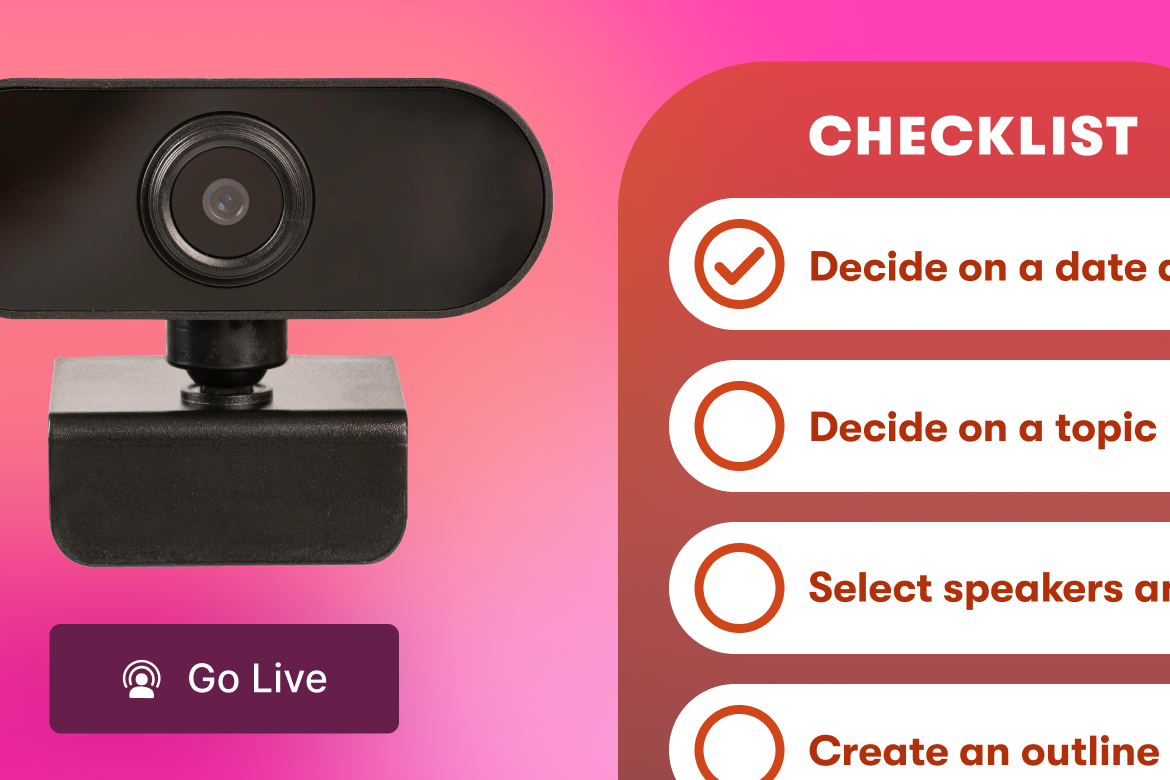How to Make Your Videos Accessible with Audio Descriptions
October 14, 2025
Topic tags
Delivering a fully accessible video is not only best practice, but also essential for meeting new regulations, such as the European Accessibility Act (EAA). While many people may be familiar with visual support like captions and transcripts, you may be less familiar with auditory support features. We’ll dig into what audio descriptions (AD) are, why they matter, how to create them, and best practices for selecting the right type of audio description for your content.
What are audio descriptions?
Audio descriptions provide auditory support. If someone with a visual impairment wants to engage with your video, audio descriptions help them follow what’s happening on screen with audio cues.
For example, a product demo or tutorial video shows how to engage with a product or an online course, highlighting different techniques. While these videos have strong visual components and possibly some narration of what’s happening on screen, viewers rely on visual cues to fill in the gaps. That’s where audio descriptions come in to provide continued narration for those with visual impairment.
How to create audio descriptions
Audio descriptions sound simple enough to add on your own, but the biggest hurdle is often the media player you choose and how easily it allows you to add the AD track and allows your audience to select the AD option (the button to find it should be WCAG compliant).
There are two main ways to incorporate audio descriptions into your video:
Manually create and upload your own
Here are the steps for creating your own audio descriptions:
- Watch your video: Find the moments when there’s no dialogue and take note of how long a gap you have to work with.
- Write a script: Describe what’s happening in particular scenes to form your script. As you’re scripting, make sure your lines fit into the gap between dialogue in your video. Avoid making your audio description too long; otherwise, it interferes with other existing audio.
- Record a voiceover: Keep an eye on your pacing, and ensure your descriptions still fit within the gap between audio, just like you did when scripting.
- Bring your audio file into your post-production software: Add the AD narration as a new track in your video. Adjust the volume of your music track, if needed, to ensure the narration can be heard clearly.
- Export your file: When things are sounding good, you’re ready to export. Export your original video, audio file, and the AD narration as one MP3, OGG, or WAV file.
- Upload your AD file to your video: Upload your AD file that includes your original audio, video, and description. Depending on your video hosting platform, viewers will see an AD button with the option to turn them on.
Order audio descriptions
While you can certainly record your own audio descriptions, the practice requires an understanding of what to narrate and how so that viewers get a clear sense of what’s happening on the screen. That’s why it’s helpful to order audio descriptions from professionals who have extensive experience delivering on this accessibility feature.
Adding audio descriptions with Wistia
Our goal at Wistia is to make accessibility as seamless as possible so it comes standard with every video.
Here’s how to add audio descriptions in Wistia:
- In the Customize panel, select “Audio description.”
- Upload your AD file that includes your original audio, video, and description.
Viewers are able to select AD as an option for your content. If you’ve uploaded audio descriptions in multiple languages, they have the option to choose their preferred language.
We also offer human-reviewed or AI-generated audio descriptions directly through Wistia:
- Human-reviewed audio descriptions start at $8/min and have a turnaround time of 5 business days.
- AI-generated audio descriptions start at just $1.00/min and are completed within hours.
Standard vs. extended audio descriptions
Since audio descriptions are an additive piece to your content, it’s important to know the best way to incorporate them so you can deliver a seamless experience for your audience. That’s where the two types of audio descriptions come into play:
Standard audio descriptions
Standard audio descriptions leverage the existing audio pauses in your content to provide an audio narration of what’s happening on screen.
Types of videos standard audio descriptions are ideal for:
- Videos with a significant amount of audio narration for the visual components of the video
- Videos in which only bits of additional description are needed
- Videos with naturally very long and open pauses that could be filled in with an audio description.
Extended audio descriptions
Extended audio descriptions (XAD) pause the video to give an audio narration of what’s on screen.
Types of videos XAD are ideal for:
- Videos with continuous audio that do not describe what’s happening on screen and require added pauses to narrate the visual components, without overlapping with the existing audio.
- Videos with very complicated visual components (i.e., multi-step product tutorials or complex movement classes) that require added time to explain what’s taking place on screen clearly.
Understanding what type of video you have and how audio description would best fit within your content is key to delivering the best experience for your audience.
So with that, let’s take a look at best practices for incorporating audio descriptions:
Tips for making better audio descriptions
Consider accessibility from the start
While it’s always possible to retrofit a video to be more accessible to your audience, it makes a big difference when you consider accessibility needs from the beginning.
For example, consider how quickly you transition from one part of the product to the next in a demo so folks have time to follow along. Or review your script to ensure helpful pauses where you could insert descriptions or even opportunities to describe the visual components as you go.
Know your pauses
First and foremost, it’s essential to determine the type of video you have and whether it’s a suitable fit for Standard or Extended Audio Descriptions. If you have lots of natural breaks in your video, Standard is the way to go. If you have a lot of audio already in the video, it’s best to err on the side of Extended Audio Descriptions.
Consider the value of a pro
You’re always going to be the expert on your content — knowing what you’re trying to say and show. However, if you want super-accurate audio descriptions, calling in other professionals who provide skillfully delivered audio descriptions might be worth it.
With Wistia, you can input key terms, proper nouns, and important phrases into the glossary when you order, so you know that the most important parts of your content are still going to come through in the ordered AD.
Keep it all together
When uploading your audio description separately or downloading from a third party, you run the risk of unaligned audio in your video. By keeping things together in one platform, you save yourself a lot of headaches from having to edit and tweak to get everything where it should be.
Make it a regular practice
Whether or not your business is impacted by regulations requiring audio descriptions, it’s important to make audio descriptions available in your video content regardless. Creating more accessible content means you’re accessible to a wider audience in the long run, and your thoughtfulness and intention won’t go unnoticed.






